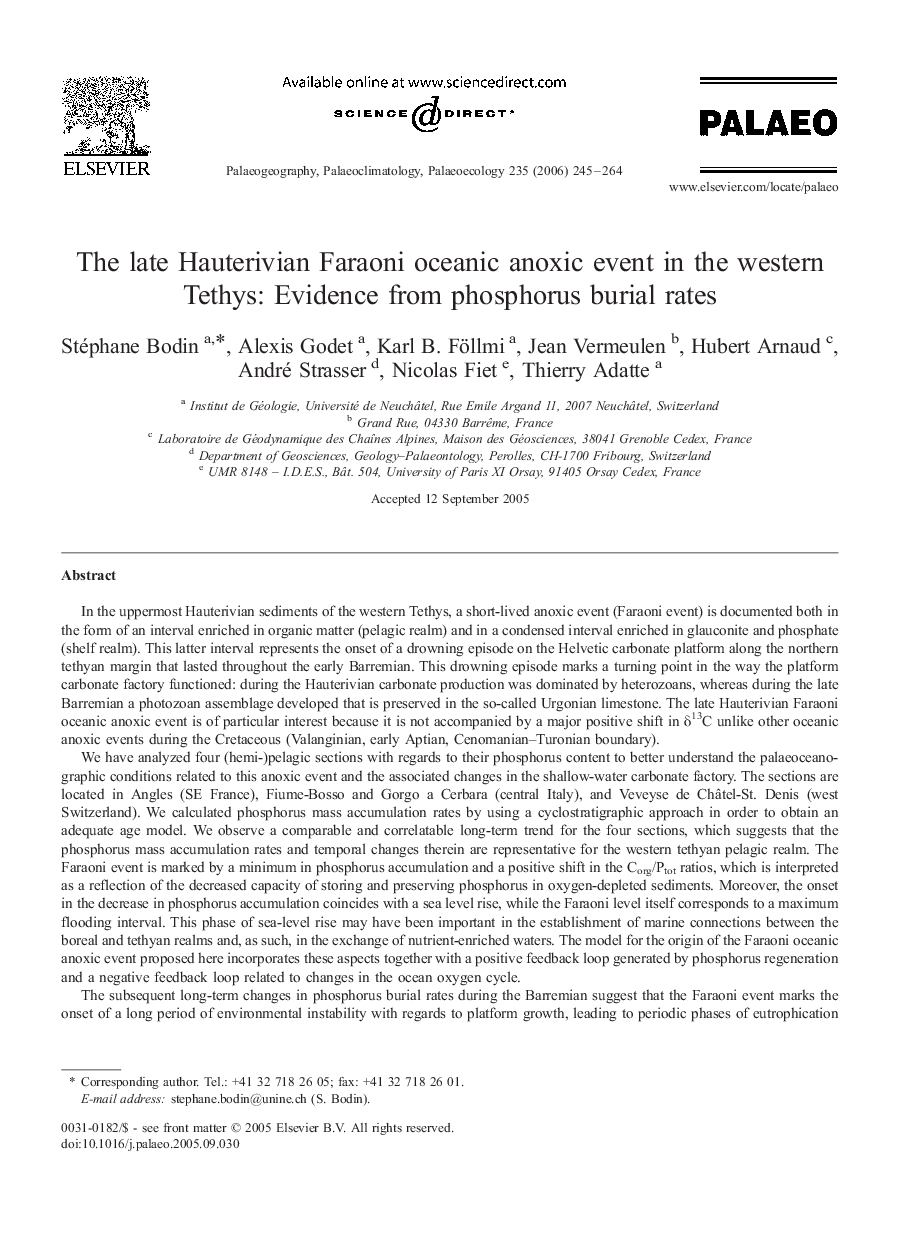| کد مقاله | کد نشریه | سال انتشار | مقاله انگلیسی | نسخه تمام متن |
|---|---|---|---|---|
| 4469459 | 1622373 | 2006 | 20 صفحه PDF | دانلود رایگان |

In the uppermost Hauterivian sediments of the western Tethys, a short-lived anoxic event (Faraoni event) is documented both in the form of an interval enriched in organic matter (pelagic realm) and in a condensed interval enriched in glauconite and phosphate (shelf realm). This latter interval represents the onset of a drowning episode on the Helvetic carbonate platform along the northern tethyan margin that lasted throughout the early Barremian. This drowning episode marks a turning point in the way the platform carbonate factory functioned: during the Hauterivian carbonate production was dominated by heterozoans, whereas during the late Barremian a photozoan assemblage developed that is preserved in the so-called Urgonian limestone. The late Hauterivian Faraoni oceanic anoxic event is of particular interest because it is not accompanied by a major positive shift in δ13C unlike other oceanic anoxic events during the Cretaceous (Valanginian, early Aptian, Cenomanian–Turonian boundary).We have analyzed four (hemi-)pelagic sections with regards to their phosphorus content to better understand the palaeoceanographic conditions related to this anoxic event and the associated changes in the shallow-water carbonate factory. The sections are located in Angles (SE France), Fiume-Bosso and Gorgo a Cerbara (central Italy), and Veveyse de Châtel-St. Denis (west Switzerland). We calculated phosphorus mass accumulation rates by using a cyclostratigraphic approach in order to obtain an adequate age model. We observe a comparable and correlatable long-term trend for the four sections, which suggests that the phosphorus mass accumulation rates and temporal changes therein are representative for the western tethyan pelagic realm. The Faraoni event is marked by a minimum in phosphorus accumulation and a positive shift in the Corg/Ptot ratios, which is interpreted as a reflection of the decreased capacity of storing and preserving phosphorus in oxygen-depleted sediments. Moreover, the onset in the decrease in phosphorus accumulation coincides with a sea level rise, while the Faraoni level itself corresponds to a maximum flooding interval. This phase of sea-level rise may have been important in the establishment of marine connections between the boreal and tethyan realms and, as such, in the exchange of nutrient-enriched waters. The model for the origin of the Faraoni oceanic anoxic event proposed here incorporates these aspects together with a positive feedback loop generated by phosphorus regeneration and a negative feedback loop related to changes in the ocean oxygen cycle.The subsequent long-term changes in phosphorus burial rates during the Barremian suggest that the Faraoni event marks the onset of a long period of environmental instability with regards to platform growth, leading to periodic phases of eutrophication and drowning of the northern tethyan carbonate platform. This environmental crisis ended during the late Barremian with the onset of the deposition of the Urgonian limestone under oligotrophic conditions.
Journal: Palaeogeography, Palaeoclimatology, Palaeoecology - Volume 235, Issues 1–3, 29 May 2006, Pages 245–264